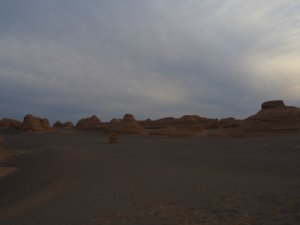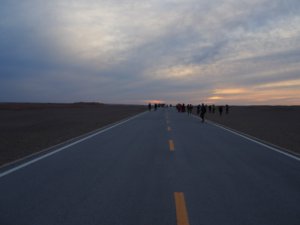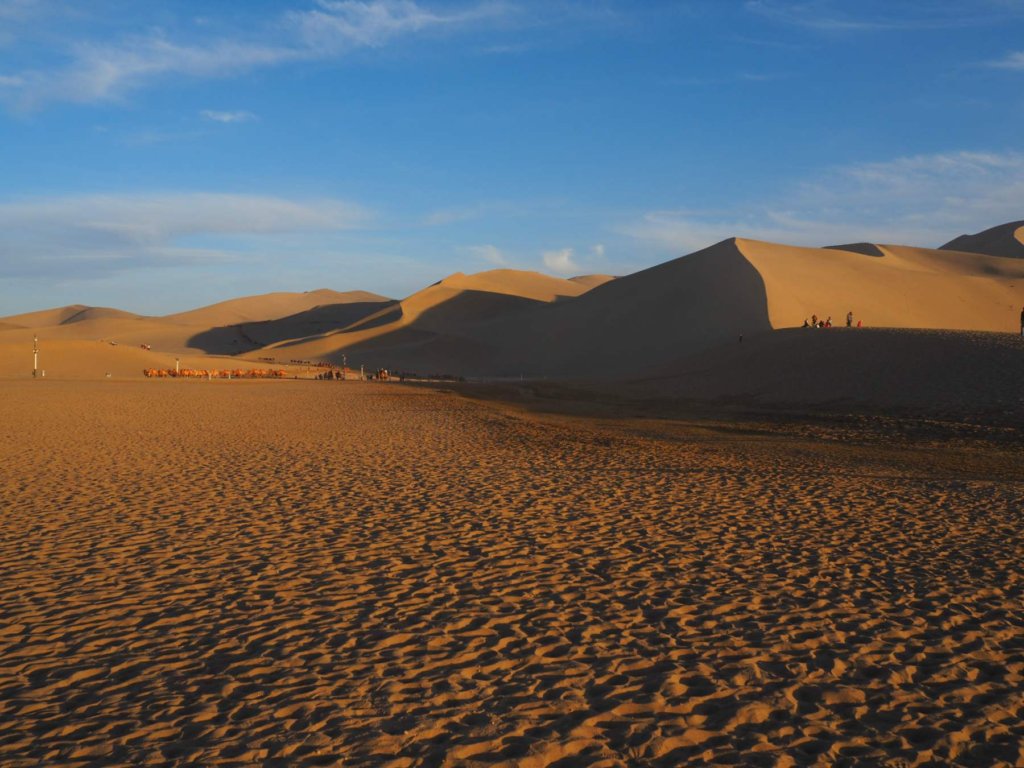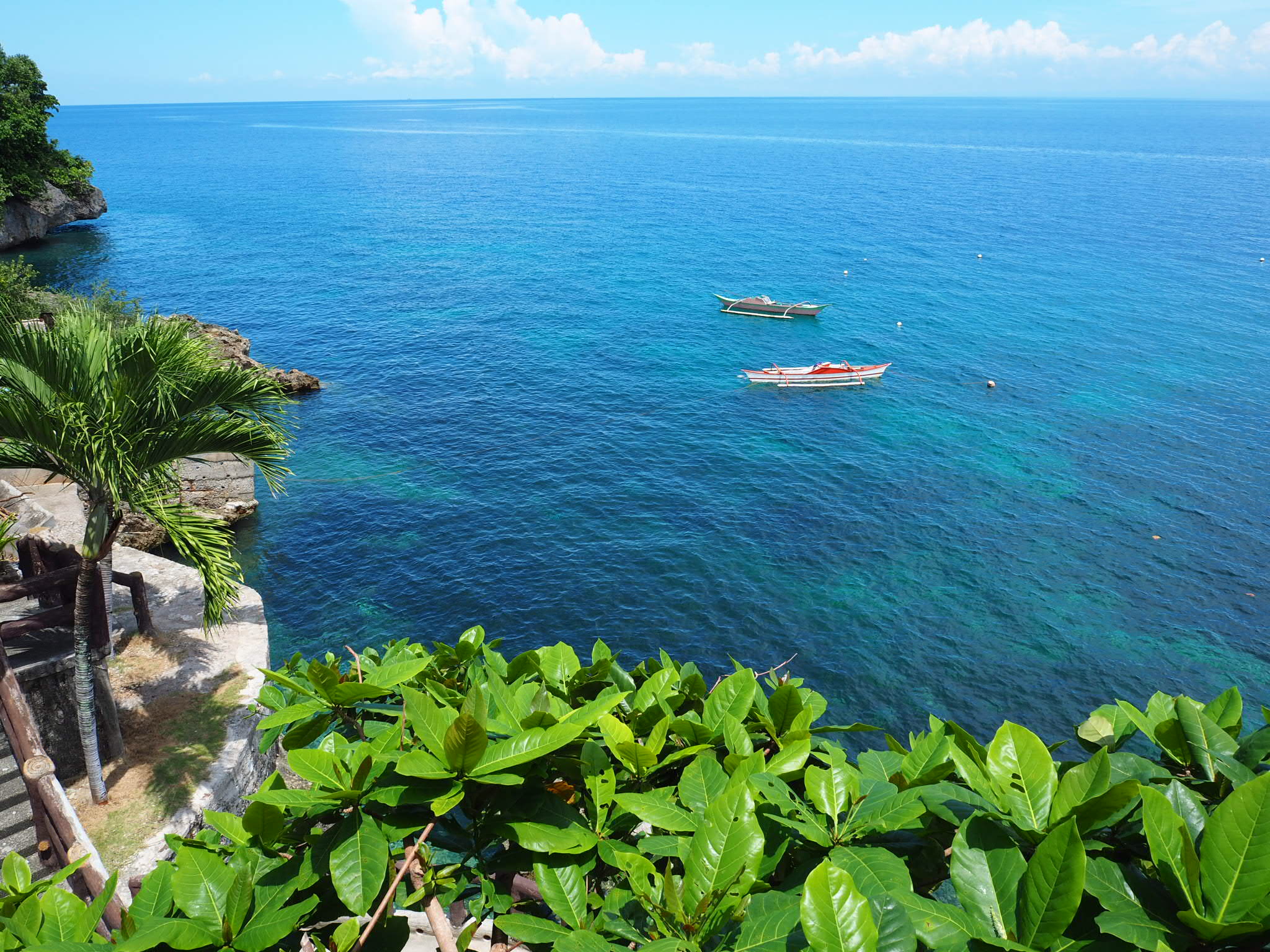What to do in Dunhuang
An oasis located in the most western region of Gansu, Dunhuang has been a crossroad of culture and trade since the times of the ancient silk road. Surrounded on all sides by inhospitable terrain its amazing that civilization exists at all. Any trip to the far western regions of China is very likely to include at least a stop over in Dunhuang as this is the main gateway into Xinjiang, Chinas final frontier.
Dunhuang is barely even a city by Chinese standards. This tiny speck on the map relies heavily on tourism a source of income and prosperity for the local population. Visitor numbers, both domestic and international are increasing. The city centre itself has very little to offer and is merely a base to explore the other surrounding areas. Its small size meaning that location isn’t quite as important as in China’s other metropolises.
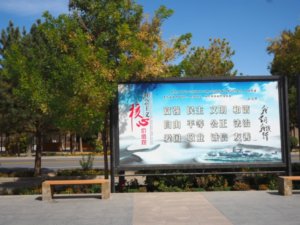
Getting There And Away
Although there is an airport you are far more likely to arrive here by train. We came in from the Jiayuguan and went on to Turpan a very similar route to most people who visit Dunhuang. Most will arrive on night trains from other parts of Gansu, Qinghai or Xinjiang. During peak seasons train tickets should be booked as far in advance as possible otherwise you may end up with a hard seat on a long train journey.
From the train station a cab ride into the centre is around 30-40 rmb. Do be aware that there are plenty of scammers operating unlicensed taxis and cabbies that don’t want to use the meter. As always in China, insist on it, but if they don’t then step out and grab another cab.
Best Time To Visit
Dunhuang and the surrounding area has a lot to see and do and naturally is very popular with domestic tourists. As a result it’s best to avoid any national holiday like the plague. In addition to this, it boils in summer and freezes in winter, September and October are particularly good times to visit.
Best Things To Do in Dunhuang
By Chinese standards Dunhuang is tiny. With little alternative industry, tourism is an extremely important source of income for the local economy. With the hordes of tourists that descend on the city it can feel like a place that exists only to serve the purpose of it’s visitors.
Mogao Caves (莫高窟)
Probably the main thing to see in Dunhuang. These caves are known for their stunning buddhist paintings and sculptures dating 4th century AD. The city was initially established as a frontier garrison in 111 BC. As Buddhism made is way into China through various trade routes, diplomatic missions and word of mouth Buddhist monks began creating a huge network of temples and carvings, 492 to be precise. The caves art work spans a period of more than 1000 years however it flourished both in terms of construction and pilgrimage in the Sui and Tang Dynasties.
This place receives a lot of visitors, however unlike other sites in China, it is well organised and very accessible even if you don’t speak Mandarin. Foreign nationals do not need to buy a ticket in advance (it doesn’t hurt though), Chinese citizens on the other hand, do need to buy tickets in advance due to the huge numbers of domestic tourists. With the number of foreign tourists being far fewer you should be able to get on on the day.
The ticket includes an excellent documentary detailing the history of the caves, it is in Chinese but staff will give you a headset to listen to it in English. Other languages are available but I’m not sure which ones. Following this you will take a bus journey for 10-15 mins into the desert and you will have a guided tour around 7 or so caves. The art work is far too fragile to just let tourists go stampeding through.
Follow the signs to the caves and you will be told where to wait for your guide. If in doubt show the ticket to one of the attendants and they will tell you. All of the tickets have a time and language to indicate what group you are supposed to be with. The guides we had were excellent, very knowledgable and engaging. The murals, paintings and carvings are incredible and are truly one of the most spectacular Buddhist sights in China.
After the tour there are 2 free caves that are unsurprisingly rammed, however they do have some stunning carvings, just be prepared to battle for space.
Getting there
Taxi really is the only option. The standard price from the city centre seems to be between 20-30 rmb depending on your negotiating skills.
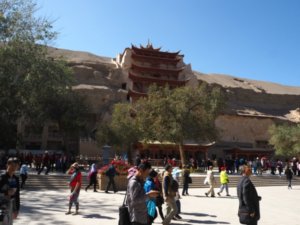
Crescent Lake (鸣沙山月牙泉)
Located 6km from the centre of Dunhuang this stunning oasis has all the best and worst bits of travelling in China. Firstly the good, the views from the sand dunes are spectacular. Sand dunes stretching as far as you can see. However you will have to contend with lots of people, trains of camel rides and even the occasional microlight (yes really).
The temple on the edge of the lake is rather pretty but the highlight is most definitely climbing on the dunes and enjoying the scenery. The price here, at around 120rmb per person is very high, even for China but it is valid for 3 days. I’m not really sure what you would want to do here for 3 days, but you do have the option.
Getting there
Take bus number 3 from the town centre for 2 rmb from the last stop. Buses are regular and generally quiet by Chinese standards as the vast majority of tourists are on guided tours.
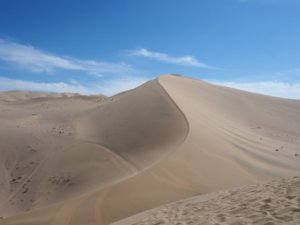
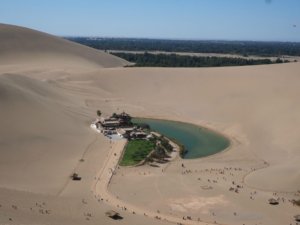
Outside Dunhuang
The are surrounding Duhunag is home to some particularly stunning areas. The best and most affordable way to experience these sights is through a group tour. C-trip is the best place to check. The English version has plenty of options for you to choose. They usually leave around 8 am and get back around 11pm at night as many include a spectacular sunset at the Ya Dan National Park. In China use the phrase 上车睡觉下车拍照 which means sleep on the bus and get off the bus to take photos. This certainly an accurate reflection as you will spend a lot of time on the bus.
Yangguan
This ancient settlement has an interesting museum, although English captions are limited. There are some great views over the canyon.
Xi Qitian Grottoes
These grottoes a re rather pretty but are nothing compared to the stunning Mogao Caves. The views from the entrance are partiularly nice.
Yumen Guan
This stunning archeological site has some amazing views over the desert. The site itself is vast, and again you will need to be bussed around in order to see the ruins and relics that remain.
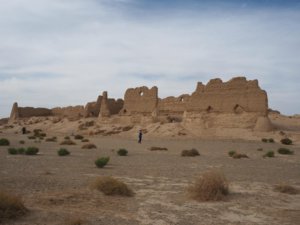
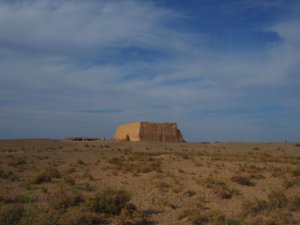
Ya Dan National Park
For many of these kinds of trips this is the last stop. Sunset views are particularly spectacular. You will hop off your bus and jump onto another one. From here it’s a very long drive back to Dunhuang.
